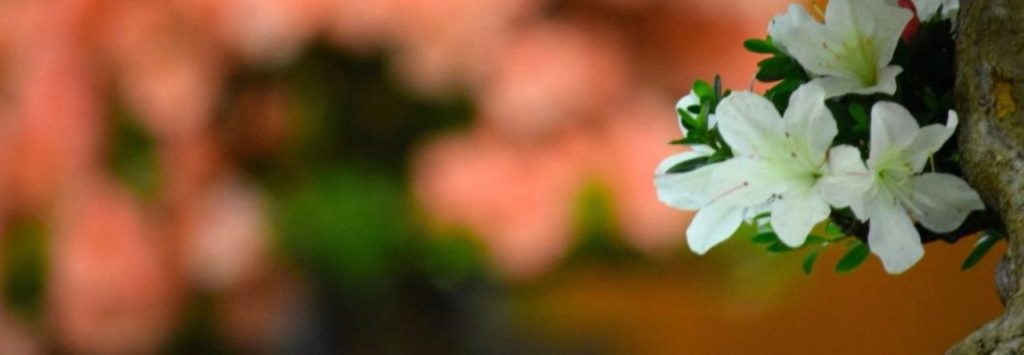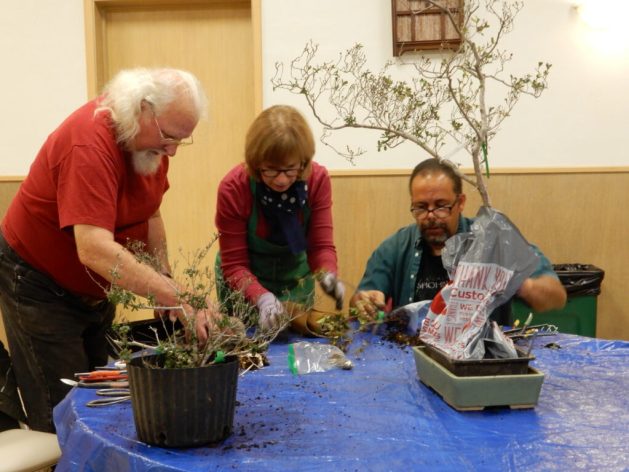On February 27, 2020, Darren Wong demonstrated for members of the Bay Area Satsuki Aikokai a technique for creating exposed root Satsuki azalea bonsai. The materials used for the demo included: Satsuki azalea cuttings, one four inch plastic nursery container, a plastic empty beverage bottle, small size Japanese Kanuma, medium size Japanese Kanuma, Japanese mountain moss (Yamagoke – Dried Japanese Mountain Moss for Surface Root Protection). Tools included: scissors, chopstick, #2 aluminum wire, wire cutters.

Step one was to cut the top off the plastic empty beverage bottle and make several large holes in the bottom of the container. It is best to have a plastic bottle that is narrower at the top and wider at the bottom. This is so the roots will grow within the container and be wider at the bottom than the top. Otherwise, the roots would grow evenly or worst in a reverse taper.
Step two, fill the four inch nursery container with medium size Kanuma about half way up. The roots will grow through the bottom holes in the beverage container in to the Kanuma.
Step three, attach the aluminum wire to the bottom of the beverage container. Then insert the beverage container into the four inch nursery container and wrap the wire around the nursery container in order to secure them together.
Step four, prepare the Satsuki azalea cutting by removing all potting soil and bare rooting the plant. Trim some of the foliage, if needed. Do not trim any of the roots.
Step five was to insert the Satsuki azalea cutting roots into the top of the beverage container. Then fill the beverage container with medium Kanuma about ¾ of the way up. Top off the beverage container with small Kanuma. Now fill the remaining portion of the four inch nursery container with the medium Kanuma. Use a chopstick to remove any air pockets in the Kanuma.
Step six was to place the Japanese mountain moss on top of the small Kanuma layer at the top of the beverage container to protect the root surface.
Finally, water thoroughly.
























